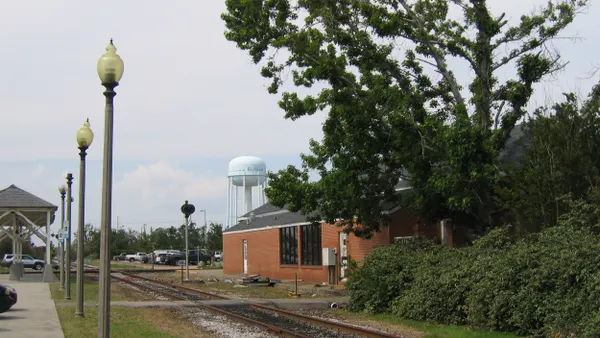Dive Brief:
-
StreetLight Data has partnered with Siemens ITS Digital Lab, a digital center for intelligent traffic systems, and Siemens Energy Business Advisory, a strategic planner for energy transitions, to help U.S. cities and communities plan for electric vehicle (EV) deployment.
-
Through location data collected from millions of cell phones, StreetLight Data helps cities prepare for EV infrastructure by analyzing parking and drive-by volume compared to current capacity; grid demand based on incremental EV usage; and personal vehicle and commercial truck activity. Combined with Siemens Energy and EV infrastructure consultancy, the partnership can help planners identify the optimal locations to place EV chargers, Martin Morzynski, VP of marketing and product management, told Smart Cities Dive.
-
Cities generally lack sufficient information to make the best choices about where they should deploy EV infrastructure to maximize EV use, according to Morzynski. With the partnership, city planners can identify and prioritize the best places for charging stations to encourage EV adoption.
Dive Insight:
StreetLight Data and Siemens ITS Digital Lab recently worked with Santa Clara, CA to help the Silicon Valley-area city determine the most effective locations for public charging stations.
Santa Clara's Climate Action Plan supports the state's environmental goal to have 5 million EVs on the road by 2030. Siemens and StreetLight Data worked with area planners to determine the best locations by providing EV requirements for zones within city jurisdiction; information about the areas with high traffic density; and "human-centered metrics such as commuter traffic, journey lengths, population income and multi-family environments," according to a StreetLight Data report.
And the demand for EV chargers should only continue to grow as more cities and states set increasingly ambitious climate goals.
New legislation, building codes and partnerships between businesses and public utilities have helped cities encourage that growth. California, for example, hopes to phase out all gas- and diesel-powered buses in the state by 2040, with transit agencies banned from buying any new gas-powered buses by 2029. Transportation makes up about 40% of the state's greenhouse gas emissions (GHG), and by converting to electric buses, their GHG emissions could lower 85% compared to business as usual projections.
Spokane, WA recently moved to waive construction and building permit fees from new EV charging stations. Berkeley, CA introduced legislation banning the use of natural gas in new low-rise residential buildings starting Jan. 1, 2020, requiring that those buildings are equipped to support electric infrastructure. And San Jose, CA, multi-family buildings are now required to have 70% EV-capable parking spaces.
Utility partnerships are also essential for a successful rollout of EVs and charging infrastructure. The Rocky Mountain Institute recently warned that grids could become overwhelmed by charging stations without government and utility partnerships. Grids will need to be upgraded if cities are going to deploy more EVs. The report also recommended that cities put chargers at designated drop-off spots for ride hailing companies and that apartment buildings have fast chargers, including in underserved areas.










